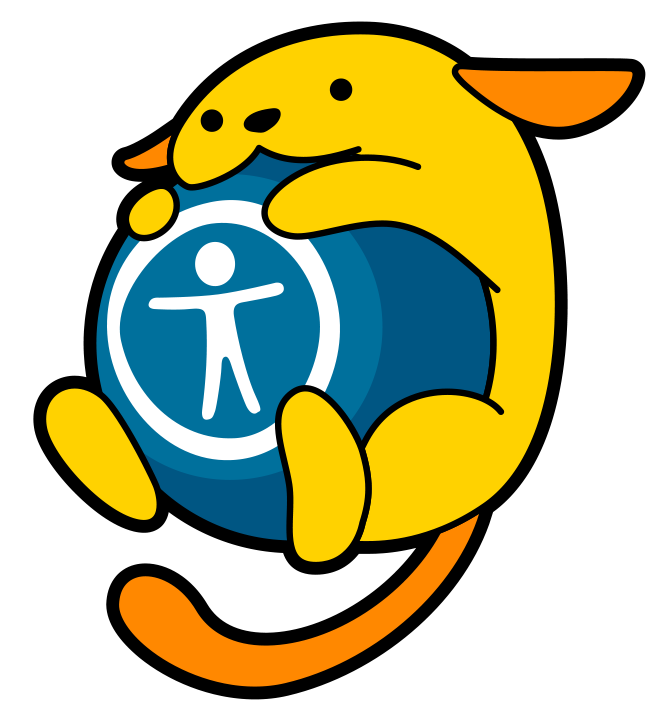Getting Started with WordPress Accessibility
Overview

- Introduction to digital accessibility for websites
- Who accessibility helps
- Compliance and the law
- Benefits
- Primary elements of accessibility
- The Dos and Don’ts
- Plugins & Tools
- Resources
What is an Accessible Website
An accessible website is one that can be used by everyone. This includes:
- People of all abilities
- And disabilities
- Who might use a variety of devices and assistive technology.
Primary reference: W3C Web Accessibility Initiative (WAI)
Principles of Digital Accessibility
The principles of digital accessibility are often referred to by acronym POUR:
- Perceivable information and user interface
- Operable user interface and navigation
- Understandable information and user interface
- Robust content and reliable interpretation
Who Accessibility Helps
The number of people impacted by accessibility issues numbers more than 1 billion worldwide, including 1 in 4 adults in the U.S.
- Blind or visually impaired people
- Deaf and partially deaf people
- People with cognitive disabilities
- People who cannot use a mouse (or keyboard)
- Neural divergent people
- PTSD, OCD, anxiety, dyslexia, ADHD, etc.
- People with seizure disorders
- People who are not tech savvy
- People on mobile devices
- People on slow connections
- People with older technology
- Language learners and those who use translation tools
- Anyone dealing with a temporary disability
- Anyone encountering a situational limitation
Compliance and the Law
Digital accessibility is the law and there can be consequences. (We are not lawyers.)
- Rehabilitation Act Section 504
- Rehabilitation Act Section 508
- Americans with Disabilities Act (ADA)
- Accessibility for Ontarians with Disabilities Act (AODA)
- Canada: Canadian Human Rights Act
- UK: Equality Act 2010
- EU: Web and Mobile Accessibility Director
Getting sued is often used as a scare tactic for using some commercial accessibility products. It can happen – but the solution is creating a better website.
For the Right Reasons: Benefits
An accessible website provides many more benefits than avoiding lawsuits:
- It’s the right thing to do.
- Supports organizational values including diversity, equity, and inclusion.
- Part of being an Equal Opportunity Employer.
- Increased audience
- Improved site experiences means increased conversions
- Mobile ready
- SEO benefits
Search Engine Optimization
Accessibility means improved SEO.
- Semantic HTML structure
- Proper headings for clear document content
- Well written, understandable content
- Image alt text increases useful content
- Meaningful link anchor text
- Adding transcripts of audio increases content
- Fewer “special effects” and animations improves load time
A good user experience and clear, valuable content is what search engine algorithms favor.

Primary Elements of Website Accessibility
Here are key areas of focus:
- Content structure and readability
- Proper ordering & nesting of headings
- Content layout and design
- Alternative text for images
- Keyboard navigation
- Menus, tab order, focus on
- Clear link text and results
- Colors and color contrast
- Form labeling
- ARIA roles
- Responsiveness
- Fewer “special effects” and animations improves load time
The Dos of WordPress Accessibility
- Embrace accessibility and make it a habit
- Start with an accessible theme
- Choose colors thoughtfully
- Choose fonts and typography thoughtfully
- Use Alt text for images, efficiently describing the image
- Use alt=”” for purely decorative images
- Check if plugins (e.g. forms) are accesssible
- Write with English Composition class in mind
- Provide transcripts for audio content
- Check and confirm captions for video
- Test regularly
- Include an accessibility statement and contact if issues are found
- Continue to ask, explore, and learn
The Don’ts of WordPress Accessibility
- Panic
- Ignore or procrastinate
- Look for automated quick fixes
- Over design a webpage
- Be selective with video, animation, etc
- Don’t autoplay video & images
- Use any plugins or embeds that will “trap” a user
- Force links to open in new tab (at least without warning)

WordPress Plugins
In the WordPress repository, there are many “overlay” plugins that promise accessibility. We will discuss later. Here are some plugins that actually help.
Overlays for Quick Fix Accessibility
Avoid them. They don’t help and they won’t protect you.
- Overlay Fact Sheet
- Do Away with Overlays
- Are you using an accessibility overlay to help disabled users? Don’t!
- accessiBe Will Get You Sued
- Why AI & Overlay Widgets Fail to Protect or Serve
Whenever you search for accessibility, you will be inundated with ads for overlays. Please look past them.
Browser Extensions
There are several excellent browser extensions that can help you test your website.
Bookmarklets
Bookmarklets are pieces of script that launch on a page when clicked like a bookmark. Here are some sources:
Resources: Websites
There are many great resources available. Here are only a small few.
- W3C Web Accessibility Initiative (WAI)
- Make.WordPress.Org Accessibility Handbook
- Make WordPress Accessibility Team
- Accessible Web
- WebAIM
- Accessibility.com
- Deque.com
- DigitalA11Y
- AbilityNet
- Kinsta: How to Make Your WordPress Website Accessible
- Equalize Digital Documentation
- Accessibility Weekly on The Admin Bar
- Critical Decision-Making for WordPress Accessibility
Resources: Online Tools
There are many great resources available. Here are only a small few.
Meetup Groups
There are some Meetup Groups that focus more on accessibility. Don’t forget to search for accessibility, too.
YouTube Channels
There are some Meetup Groups that focus more on accessibility. Don’t forget to search for accessibility, too.
Final Thoughts

- Accessibility is not as daunting as it initially feels
- Good habits mean better websites for everyone
- The benefits are worth the efforts
- Try not to think of accessibility as a requirement but rather as a best practice
- Reach out to the accessibility community – they will help and advise!

